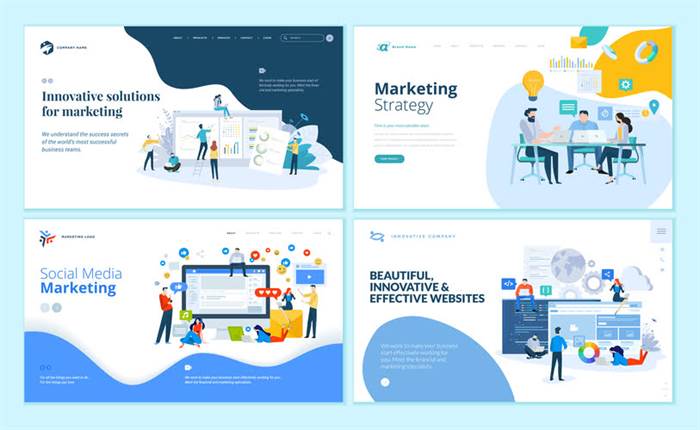What is an API? How APIs work, simply explained
The next step is to choose an API technology that will be used to interact with the chosen database. Some popular options include REST APIs, GraphQL APIs, and RPC APIs. Due to the proliferation of APIs, modern businesses now rely heavily on them for data and web automation. For example, many revenue and customer-facing teams use tools (which are built on APIs) for lead-to-account matching between a CRM like Salesforce and a marketing automation tool like Marketo. REST APIs
If you’ve heard people talk about JSON (javascript object notation), chances are they’re talking about REST APIs.
Are you interested in learning more about how an API could help add an additional layer of security to your organization’s database? Register today to start your 14-day trial in our hosted environment, discover DreamFactory’s new features and API management platform, and test the user experience for yourself. British computer scientists Marice Wilkes and David Wheeler global database api were working on a software library for the Electronic Delay Storage Automatic Calculator (EDSAC). The pair programed EDSAC to accept a variety of instructions like add, subtract, print, load, and store. This behavior is similar to how modern web APIs interface with data today, for example, «add blog post,» «delete blog post,» or «get blog post information.»
Choosing the right API and database system:
Or a hacker may send thousands of API requests per second, causing a DDoS attack or other misuses of the API service to crash your server. To enforce this constraint of statelessness, you need to use resources rather than commands. Their purpose is to describe any object you may want to keep or communicate to other services. REST-based systems are stateless, meaning that the client state remains unknown to the server and vice versa.

The first step in connecting APIs to databases is to choose the right database for your application. Each database has its own strengths and weaknesses, and the right choice will depend on your application’s specific needs. Note how abstractions are evident at every “level” of the web application. The application doesn’t need to know how the web server works, just how to use the APIs to get the data it needs to display. The end user doesn’t need to know how the APIs work, just how to navigate the user interface to perform the tasks she needs to perform. Next, I would like to explore aspects such as improving development efficiency, improving security, linking with other systems, reducing the weight of the application, and distributing the load.
Select a language
Databases are designed to store and manage large amounts of data, and as data grows, so does the need for scalable infrastructure and applications. APIs can help to manage the flow of data between applications and databases, making it easier to handle large amounts of data. By connecting APIs to databases, developers can build applications that can handle the volume of data and can scale as the data grows.

Programming languages like Python need a special driver before they can speak to a database from a specific vendor. APIs do the same for all interactions between applications, data, and devices. They allow the transmission of data from system to system, creating a connected experience.
Connecting to an Existing Database
If we want to «grab a random joke,» we are given two possible syntaxes for this. There’s nothing inherently different about those two links; the API author gives you two ways to approach using the API. You might have looked at the documentation on JavaScript libraries like Lodash to figure out how you need to format your code.

GraphQL prioritizes giving clients exactly the data they request and no more. As an alternative to REST, GraphQL lets developers construct requests that pull data from multiple data sources in a single API call. In recent years, the OpenAPI specification has emerged as a common standard for defining REST APIs. OpenAPI establishes a language-agnostic way for developers to build REST API interfaces so that users can understand them with minimal guesswork. You also developed a sample MySQL database for an online movie rating system and interacted with it directly from your Python application. The above code prints the names of all the databases currently in your MySQL server.
Creating, Altering, and Dropping a Table
For this example, we are interested in testing the /jokes/random endpoint, which gives a random joke about Chuck Norris. This endpoint has no required parameters, so just press the ‘Test Endpoint’ button and check the answer in the ‘Your Response’ tab, ’Response Body’ block. Chuck Norris API is free, it does not require a special subscription so immediately after registering with the RapidAPI service we will receive the key. You can register by clicking on the ’Sign Up’ button in the RapidAPI menu. Let’s test Get math fact endpoint which provides a piece of interesting information about an arbitrary number.

This is done because autoplaying audio is usually really annoying and we really shouldn’t be subjecting our users to it. For example, some of the more modern WebAPIs will only work on pages served over HTTPS due to them transmitting potentially sensitive data (examples include Service Workers and Push). However, this architectural style allows users to download and run code in the form of Java applets or scripts (such as JavaScript). For example, clients can retrieve the rendering code for UI widgets by calling your API. For example, the client has only the uniform resource identification (URI) of the requested resource and can’t communicate with the server program any other way.
Create your first App
A leading data analytics and credit scoring company used API integrations and automation to grow engagement for its marketing campaigns by double digits. AdRoll used automated API calls among its revenue stack to increase sales meetings 13%. Learn how you can put the power of APIs on your side by joining a group demo. Browser APIs
A browser is capable of creating a wide variety of user experiences, such as playing music, displaying intricate animations, and reacting to mouse or keyboard input. A browser gives control of these experiences to web developers via browser APIs using javascript to manipulate the HTML or create unique experiences within a browser instance.
- It’ll take the object we get back from the endpoint and add each element’s innerHTML.
- Whereas a single monolithic app does everything, some functions can be supplied by different apps that are loosely coupled through an integration pattern, like an enterprise service bus (ESB).
- After all, you wouldn’t want just anyone getting into a meteorology API and changing weather data.
- It can be a local one, a file-based one, or can be on an other server or on some cloud (AWS, Google).
- This can significantly improve the performance of database operations, especially for applications that require real-time access to data.
- As explained above, APIs are a set of rules and protocols that define how different software components can interact with each other.
From now on, you’ll use this variable to access your MySQL server. Using the techniques discussed in this tutorial, you’ll be able to efficiently integrate a MySQL database with a Python application. You’ll develop a small MySQL database for a movie rating system and learn how to query it directly from your Python code. The API is the interface that, like your helpful waiter, runs and delivers the data from the application you’re using to the airline’s systems over the Internet.
JavaScript Practice Exercises for All Levels
Understanding the function of APIs is the key to understanding how they can help business users in any role accomplish more, faster – without necessarily having to learn coding. Suitable for processing large amounts of data for real-time analysis. For example, you can retrieve the created data using the API and verify whether the response is as expected. In addition, simulate production-like situations by inserting test data into the database and testing the API.
There is an ever-growing gap between what business leaders are asking IT teams to deliver and what can actually be accomplished. Through API reuse, developers are equipped to scale delivery to close that IT delivery gap and meet the needs of the business. An API defines functionalities that are independent of their respective implementations.
APIs (Application Programming Interfaces) act as intermediaries that enable communication between applications or services and databases. They provide a structured and secure way for software to interact with the data stored in databases. APIs allow applications to request, retrieve, update, and manipulate data from databases, making them a crucial bridge between the data storage and the applications that need that data. Webhooks are lightweight callback functions that facilitate event-driven communication between APIs. In the traditional request-response cycle, an API client actively sends a request to an API server in order to retrieve data or perform actions. In contrast, a webhook listens for a specific event, such as a new user account being created or a payment being made, and performs a pre-configured action in response.






